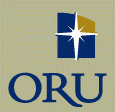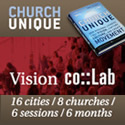ORU Two Years after Near Death… Blow by Blow
- Posted by: Todd
- Posted on: Thu, October 08, 2009
- Viewed 201
- (0) comments so far

It's been quite a ride for the faculty, staff, students and leadership of Oral Roberts University. Here's a fascinating article that gives a blow-by-blow look at how the transition actually took place...
Two years ago, facing crippling debt, legal allegations against members of its founding family, demoralized faculty, and declining enrollment, the university was given an unprecedented opportunity when a donor stepped in with a generous offer - an $8 million outright gift and a promise of $62 million more if ORU was willing to build a new board, make its finances transparent, and institute best practices in governance.
The renewal of ORU is not just an example of what a large gift can do to save a school. Rather, ORU's turnaround shows how a major gift can become the catalyst for institutional change. At ORU, when the reinvigoration of shared governance became a precondition for a philanthropic gift, that gift became a catalyst for a deep-seated transformation of the institution, rather than a one-time, and perhaps ephemeral, rescue.
To be sure, no college or theological school is "typical," but ORU has a particularly unusual history. It was founded in 1963 by a charismatic television evangelist who believed God had quite literally told him to "build Me a university and build it on My authority and the Holy Spirit." After the first students were admitted in 1965, the university grew rapidly, buoyed by the popularity of Oral Roberts himself. A visionary who had left his Pentecostal Holiness background to become a charismatic United Methodist, Roberts preached to huge television audiences - 25 million saw his Christmas special in 1971.
Roberts always dreamed big. He envisioned a comprehensive university, so programs in law, dentistry, medicine, nursing, business, education, engineering, and theology were eventually established, in addition to the humanities and liberal arts. The Higher Learning Commission of the North Central Association of Colleges and Schools accredited the university in 1971; accreditation from the Association of Theological Schools (ATS) followed in 1980. ORU's School of Theology and Missions, like 35 percent of all ATS-accredited institutions, is considered an "embedded" theological school because it is a graduate school within a university. With a head count of 452 students in fall 2008 (and a full-time equivalent of 267), it's one of the larger North American theological schools.
By the time that Roberts dedicated the 648-foot skyscraper of the City of Faith Medical Center in 1981, the 263-acre ORU campus on the southern edge of Tulsa, Oklahoma, already featured an impressive collection of futurist-themed buildings, most designed by Tulsa architect Frank Wallace. They included an 11,000-seat arena, a 3,500-seat chapel, eight dorms, and a 900,000-square-foot academic building and library. ORU's signature building had been dedicated in 1967 - the 200-foot-tall Prayer Tower. For many years, telephone operators in tiny offices at the tower's top took calls and prayed for viewers around the clock.
Read more here (it's a fairly lengthy article, but fascinating...)
Heads up to Frank at BibleBeltBlogger for the lead on this one!
Comments
if you want a Globally Recognized Avatar (the images next to your profile) get them here. Once you sign up, they will displayed on any website that supports them.






Post a Comment